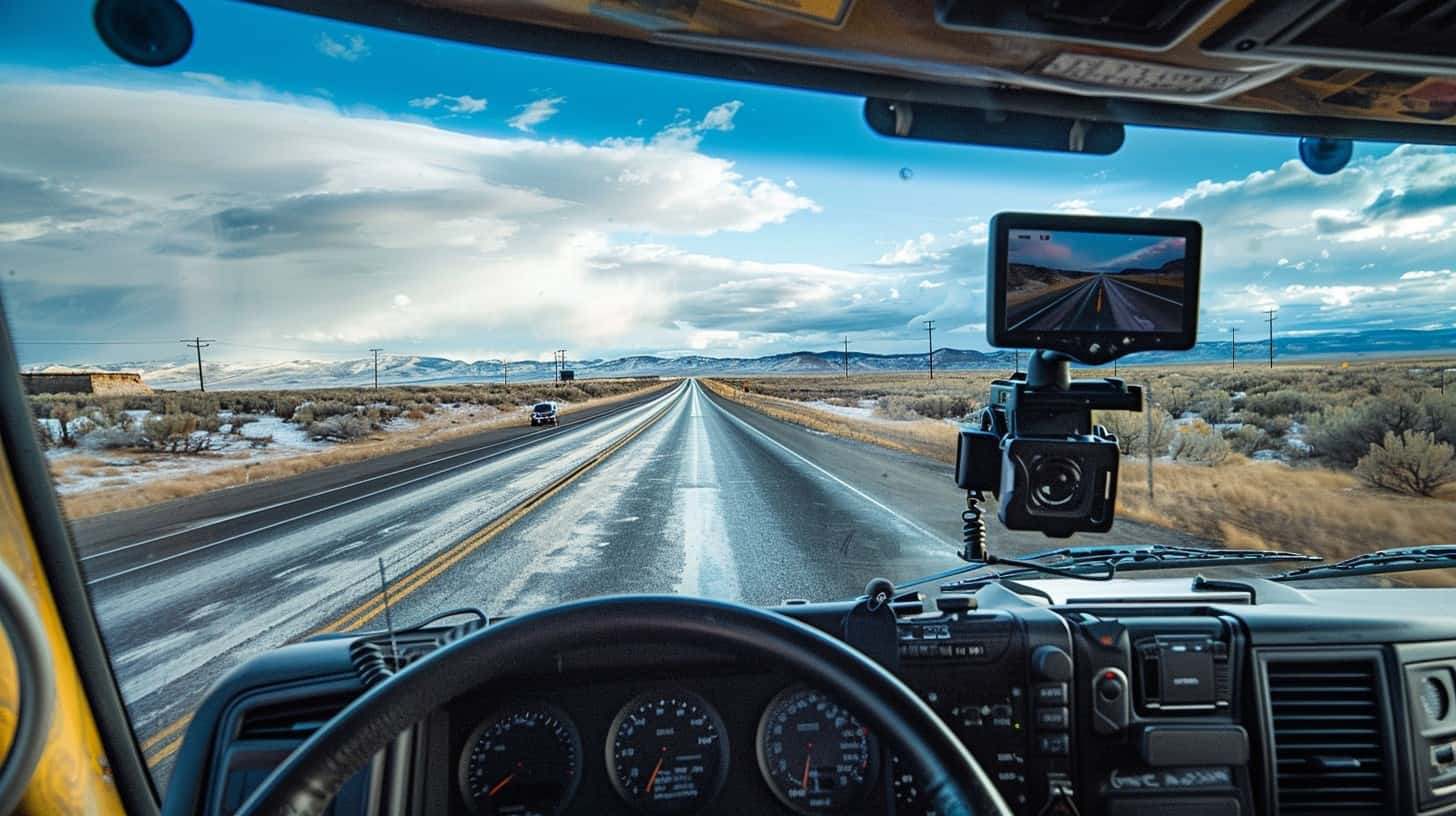Hitting the road with a truck can be tough work. A smart dash cam helps keep you safe. Our article picks out the top 5 dash cams for trucks in 2024, making your choice simple. Ready to learn more?
Key Takeaways
Dash cams for trucks in 2024 prioritize high-quality video, large storage capacity, and safety features like 360-degree coverage.
The Vantrue N4 3 dash cam leads with triple lens systems capturing detailed footage inside and out of the truck.
Cobra SC 400D offers premium features with ultra-high-definition video and connectivity to keep truckers informed on the road.
For a compact option, Garmin Mini 2 blends small size with high functionality, including Wi-Fi connectivity for easy video transfers.
Budget – conscious drivers can rely on Nexar Beam for an affordable yet effective dash cam solution that includes GPS tracking.
Table of Contents
Essential Factors to Consider When Buying a Dash Cam for Trucks
Picking the best dash cam isn’t a walk in the park. You’ve got to think about how much video it can hold, how clear your road movies will be, and if it has extra cool stuff like night vision or lane departure warnings.
Storage capabilities
Dash cams for trucks need big storage tanks to keep all the videos from long trips. Think of it like a giant backpack that can hold everything without breaking. Whether they use an SD card or cloud storage, these cameras must save lots of high-quality footage without losing any detail.
This means you won’t miss anything important on the road.
Some dash cams come with a clever trick called loop recording. It’s like having a smart cleaner who knows when to tidy up old stuff to make room for new things. They automatically replace the oldest files with fresh ones.
So, your camera never stops because it ran out of space. Plus, you don’t have to manually clean up videos from your last adventure before starting a new one.
Video resolution and quality
Crystal clear video can make or break your case in an accident. Choosing a dash cam with 1080p resolution is a wise move for crystal clear recordings. But, if you want the cream of the crop, go for one that offers 4K ultra-high-definition.
This kind of sharpness catches tiny details like license plates and road signs with ease.
“Seeing is believing – higher resolution means fewer doubts.”
Some dash cams step up their game with features like wide dynamic range and digital image stabilization. These perks help keep footage smooth and clear, even when driving through tunnels or at night.
Now, let’s shift gears to additional features that could take your dash cam experience to another level.
Additional features
Dash cams do more than just record your drive. They come with extra stuff that make driving safer and easier. Imagine having a co-pilot that never gets tired. Some dash cams have voice commands, so you can keep your hands on the wheel while still controlling things.
Think of saying “record” or “take a picture” without touching anything.
These cameras also connect to your phone or tablet through Wi-Fi or Bluetooth. This means you can see what the camera sees, right on your device. Plus, if something happens, like a bumpy road making you swerve, built-in sensors tell the camera to save that video clip automatically.
So, no worries about losing important footage among hours of uneventful driving.
Safety features
Safety features in dash cams are like having a guardian angel on the road. Cobra dash cameras come loaded with 360-degree video protection. This means they watch over every angle of your ride, leaving no blind spot uncovered.
Plus, these gadgets smartly cut down on false alerts. You won’t get jumpy with every shadow or tree branch passing by.
Think of instant-on radar detection and live police updates as your co-pilots for safety. They keep you informed about what’s ahead, almost like having future vision. Sharing and receiving heads-up from the iRadar community feels like being part of a superhero team, where everyone looks out for each other, with 100 million alerts yearly! These features don’t just add comfort; they make sure you’re secure and sharp at all times behind the wheel.
Best Budget-Friendly Option: Nexar Beam
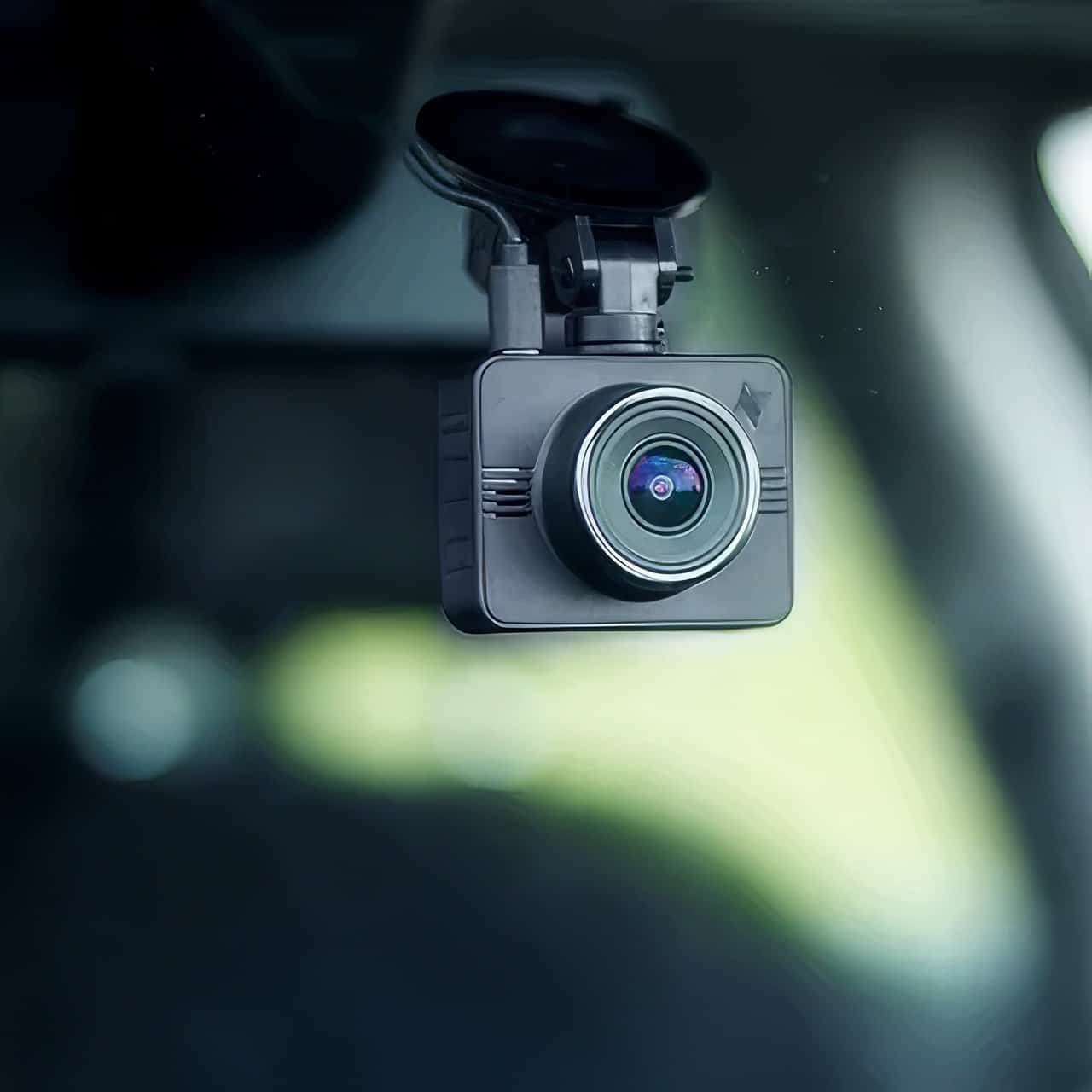
For those watching their wallets, the Nexar Beam is a smart pick. It won’t break the bank, but still keeps a keen eye on the road. Dive deeper to see why it’s worth every penny!
Overview and key features (Nexar Beam)
The Nexar Beam is a top pick for budget-friendly dash cams. It captures the road with 1080p resolution and sees wide with a 135-degree viewing angle. This ensures every detail outside your truck gets caught on film, clear as day.
The device comes ready with a 32GB microSD card, offering plenty of space to store hours of footage from your journeys. Plus, it’s smart with an app that works on both Android and Apple devices, making it easy to watch what you’ve recorded or share clips.
Safety takes the front seat with this gadget. It features parking crash video protection along with crash detection video protection, keeping an eye on your vehicle even when you’re not around.
Whether parked at a rest stop or navigating through traffic, this dash cam watches out for bumps and bruises along the way. And setting up is a breeze; just plug into your vehicle’s cigarette lighter socket, mount it on your windshield using suction or adhesive (your choice!), and hit the road knowing you’ve got reliable eyes recording everything ahead.
Pros & Cons (Nexar Beam)
Choosing the right dash cam for your truck is like picking the perfect hat. It needs to fit right and look good. So, let’s talk about the Nexar Beam. It’s kind of like the trusty baseball cap of dash cams. Here’s the lowdown in a quick, easy-to-digest table.
| Pros | Cons |
|---|---|
| Affordable, won’t break the bank | May not outlast the dinosaurs |
| Clear video, catches details | Lacks some bells and whistles |
| Tiny but mighty, easy to fit in | Some durability questions |
| Comes with GPS tracking and cloud saving | Not the king of the hill in advanced features |
For a wallet-friendly option, it’s hard to beat. Sure, it’s not the fanciest gadget out there. But it does the job well. Think of it as your reliable sidekick on long drives.
Top Rated Dash Cam: Vantrue N4 3
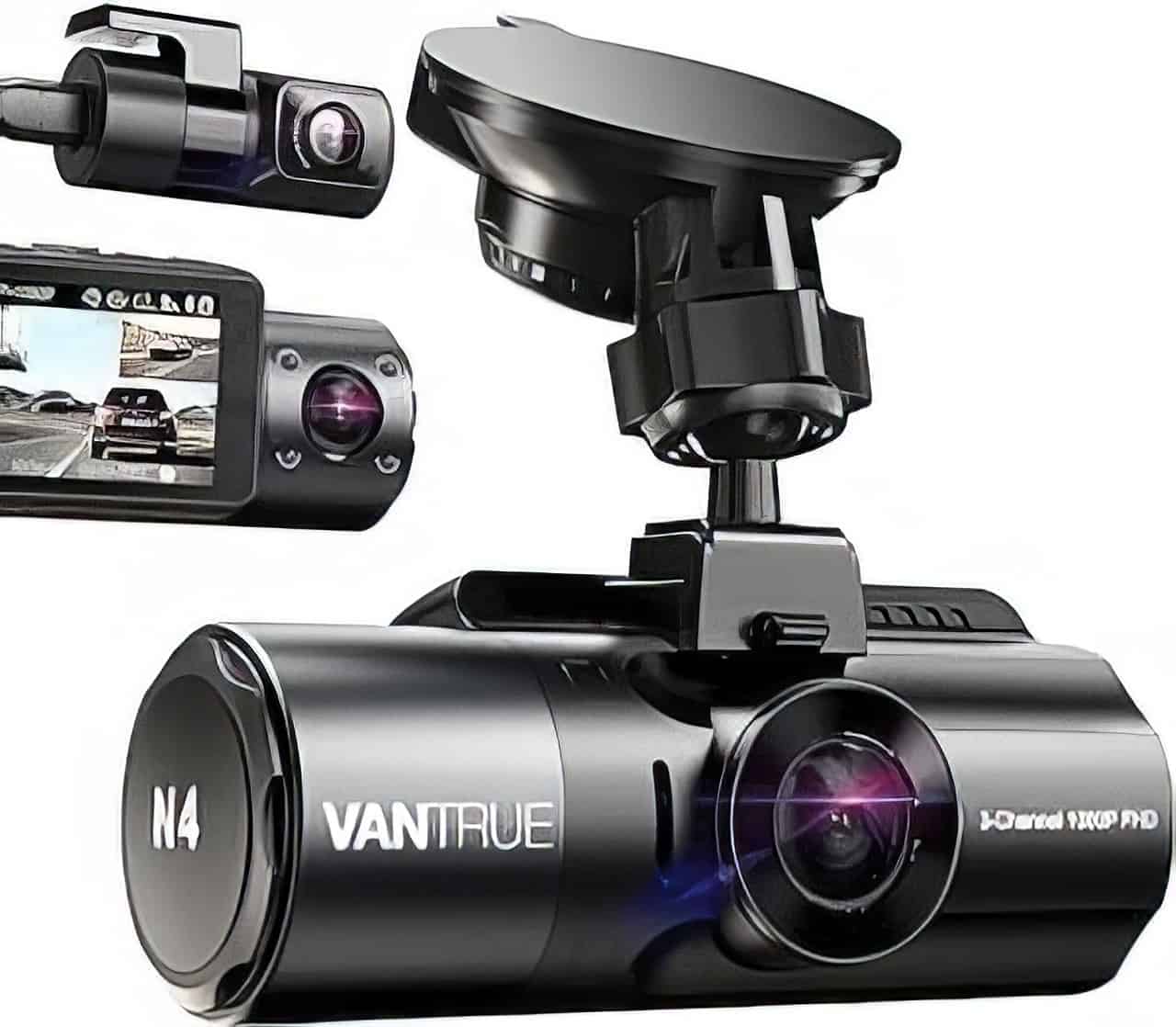
The Vantrue N4 3 dash cam takes the lead with its top-notch video quality and extra features, making every mile safer. Curious? Keep reading to find out why truckers love it.
Overview and key features (Vantrue N4 3)
Vantrue N4 3 stands out as a top pick for truckers aiming for road safety. It boasts a triple-lens system, capturing the action right in front, inside your cab, and at the rear. Front and inner cameras record in sharp 1440p resolution, while the back camera doesn’t slack with its clear 1080p quality.
With these eyes on the road, you catch every detail.
This dash cam does more than just record; it’s like a guardian for your hauls. Its wide-angle lenses cover an impressive 155 degrees – meaning side blind spots? Not on its watch. Think of it as having an extra set of hawk-eyes that never blink or look away from danger zones around your semi-truck.
Plus, with motion and collision detection technology, critical moments get locked down automatically on a microSD card (up to 128GB), offering peace of mind along every mile.
Pros & Cons (Vantrue N4 3)
Diving straight into the meat and potatoes, let’s chat about the Vantrue N4 3 dash cam’s strengths and weaknesses. This little gadget packs a punch for truckers hitting the road.
| Pros | Cons |
|---|---|
| Front and cabin-facing cameras give a 360-view, missing no detail. | It might lighten your wallet more than you’d hope. |
| Sharp 1440P and 1080P recordings make things crystal clear, day or night. | The device’s size can be a bit much for smaller vehicles. |
| Night owls rejoice with infrared night vision, ensuring clear nighttime footage. | Some find the setup process a tad complicated. |
| A 24-hour guard dog mode keeps an eye on your truck when you’re catching Z’s. | Continuous power supply needed for parking mode might require extra setup. |
| Built-in GPS doesn’t let you get lost in the sauce, tracking every move. | GPS accuracy can sometimes feel like it’s taking a wild guess. |
| Loop recording means never having to say, “Oops, no memory left!” | Constant overwrites can make saving specific clips a race against time. |
| G-sensor locks down important clips like Fort Knox during sudden stops or bumps. | G-sensor sensitivity can sometimes feel like it’s set off by a leaf falling nearby. |
| Installing and using it is as easy as pie, even if you’re not tech-savvy. | Advanced features might require a peek at the manual now and then. |
Short and sweet, these are the bullet points on the Vantrue N4 3 dash cam. It’s clear this gadget is made to watch over your haul like a guardian angel. Sure, it’s not without its quirks, but what family member isn’t? In the end, its pros outweigh its cons, making those long hauls a bit less daunting and a lot more secure.
Premium Choice: Cobra SC 400D
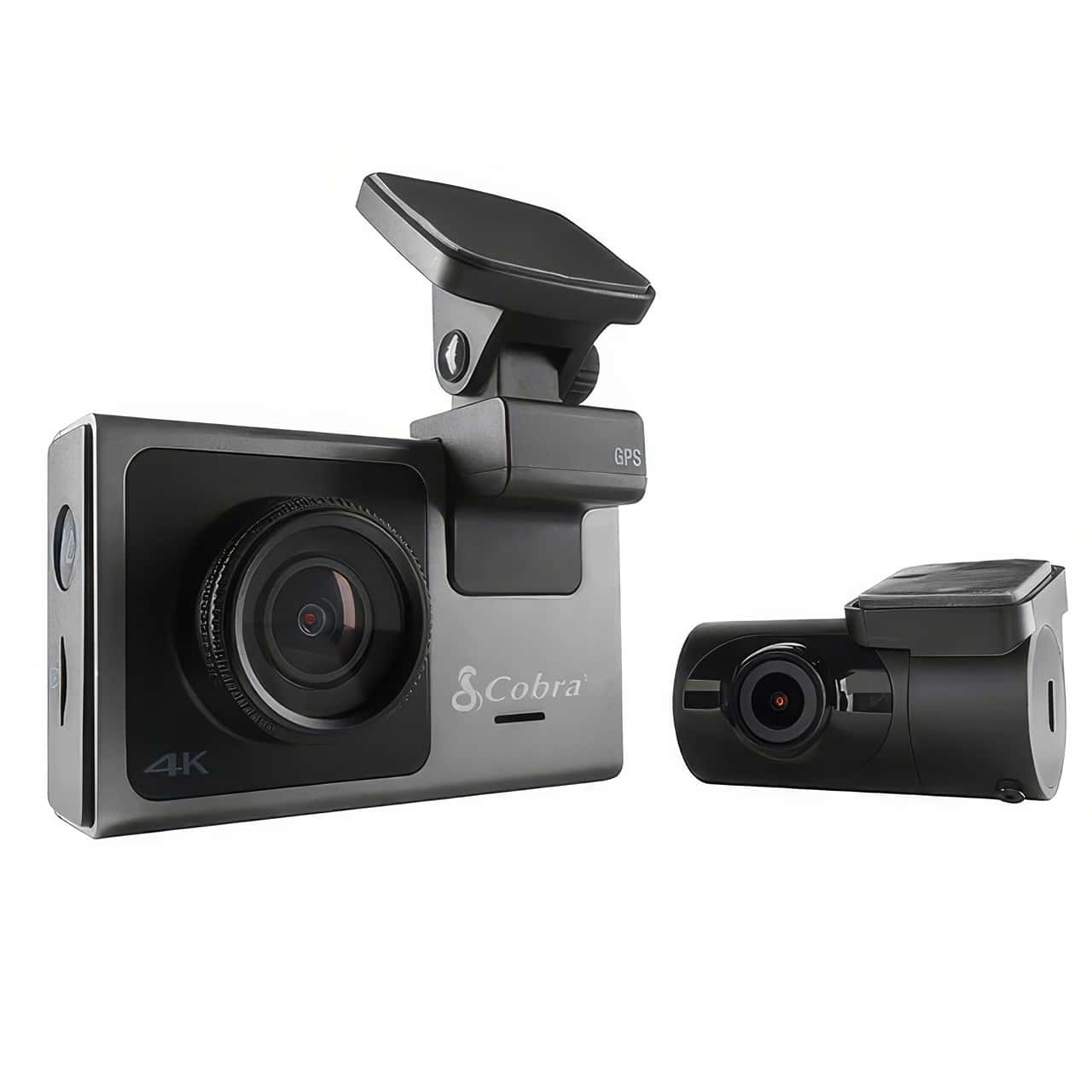
For those with a taste for the finer things on the road, the Cobra SC 400D dash cam is your premium pick. This top-of-the-line gadget not only captures crisp video but also comes packed with features like a high-resolution camera and cloud connectivity.
It’s like having a guardian angel in your truck that sees everything in ultra-clear detail. Ready to give your truck an upgrade? Check out what makes the Cobra SC 400D stand apart from the rest!
Overview and key features (Cobra SC 400D)
The Cobra SC 400D dash cam is a truck driver’s best friend on the open road. It brings ultra high definition video that makes everything clear as day. The wide-angle lens doesn’t miss a thing, capturing more of what’s happening around your big rig.
This gadget comes ready with a built-in GPS system, so you always know where you’ve been and where you’re headed.
“Seeing more and knowing more keeps you safer.”
With features like forward collision warnings and integrated internet access through mobile hotspots, it’s like having an extra set of eyes. You get alerts about what lies ahead so you can keep rolling safely.
Its design caters directly to long-haul truckers seeking reliability in their journey across states or even countries.
Pros & Cons (Cobra SC 400D)
Introducing the Cobra SC 400D, a premium choice for truckers seeking top-notch surveillance. Let’s dive into the pros and cons without further ado.
| Pros | Cons |
|---|---|
| Brilliant video quality. The Cobra SC 400D captures the road in crystal-clear 4K resolution. Day or night, this dash cam sees it all. | Pricey. Quality comes at a cost, and the Cobra SC 400D pushes the wallet. |
| Wide viewing angle. Nothing escapes its gaze, with an ability to capture the full road ahead. This feature helps spot details others might miss. | Complex setup. Some truckers might find it a tad challenging to install and get running smoothly. |
| Loaded with features. From GPS tracking to G-sensors, it’s like having a co-pilot who never sleeps. | Size matters. It’s bulkier than its compact competitors, possibly an issue for those tight on space. |
| Durable design. Built to withstand the rough and tumble of trucking life. It’s a long-haul hero. | Maintenance needs. To keep it at peak performance, regular updates and checks are necessary. |
In short, the Cobra SC 400D stands out for its superior recording quality and robust features, designed to offer truckers peace of mind on the road. However, its higher price point and some installation hassles might not be everyone’s cup of tea. Yet, for those willing to invest in their vehicle’s security, it’s a top-tier choice.
Best Compact Dash Cam: Garmin Mini 2
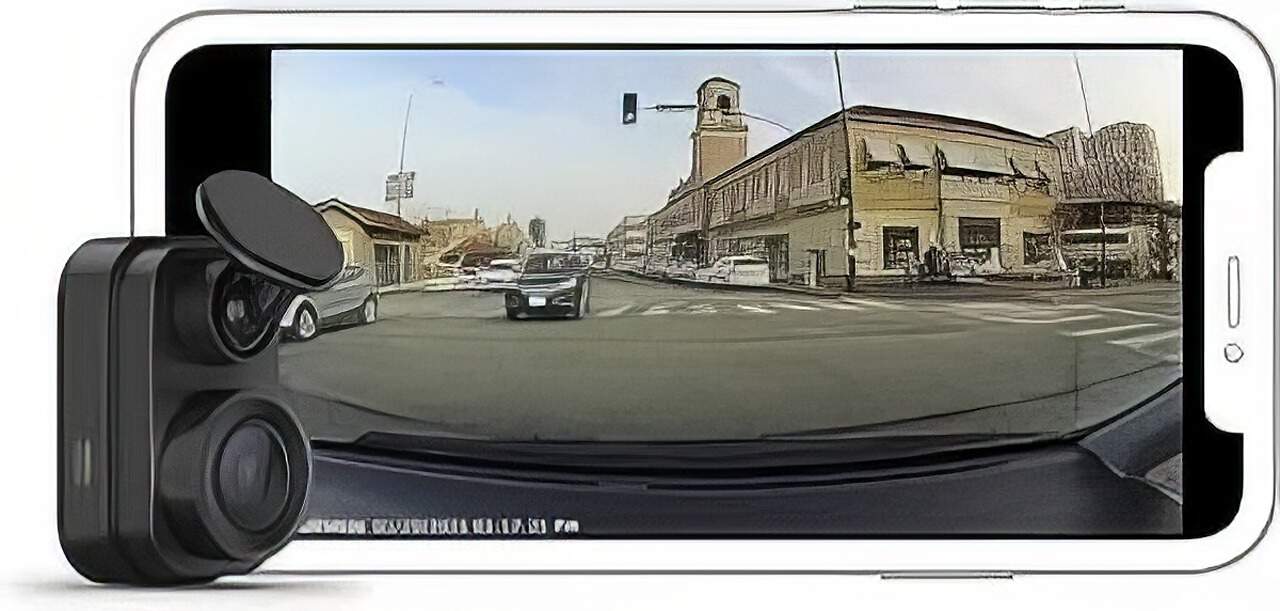
The Garmin Mini 2 packs a big punch in a small package, making it perfect for truck drivers who want high-quality videos without the bulk. Dive into the details to discover how this tiny titan keeps you safe on the road.
Overview and key features (Garmin Mini 2)
Garmin Mini 2 packs a punch for its size. This tiny dash cam slips into your truck without anyone noticing. Yet, it captures everything with crystal-clear 1080p resolution. The 140-degree angle catches details far and wide.
On the road, things happen fast. This camera knows that well. It automatically saves video when it senses trouble, thanks to incident detection.
Talking to this gadget is like chatting with a friend who listens well because of voice control. No need to take your hands off the wheel or eyes off the road. Got Wi-Fi? Garmin Mini 2 does too! Connect it for easy video transfer to your phone through the Garmin Drive app, or save clips in cloud storage.
And when you’re parked, it keeps an eye out with parking mode and records time-lapse footage, just in case something happens around your vehicle while you grab some shut-eye or a bite to eat.
Pros & Cons (Garmin Mini 2)
Shifting gears from the overview of the Garmin Mini 2, let’s dive into its strengths and weaknesses. This tiny powerhouse packs quite the punch but isn’t without its drawbacks. Keeping things simple, here’s a breakdown in a bite-sized table format.
| Pros | Cons |
|---|---|
| Compact, unobtrusive design | Smaller field of vision compared to bigger models |
| High-quality 1080p video recording | Lacks some advanced safety alerts |
| Built-in Wi-Fi for seamless connectivity | No display on the device itself |
| Performs well in various weather conditions | Storage might require frequent managing |
| Parking mode for round-the-clock surveillance | Additional purchase of parking cable needed |
This little gadget may be small, but it’s like having a guard dog in your truck – always watchful. It might not bark (or provide lane departure alerts), but it sure keeps an eye on things, come rain or shine. Just remember, it won’t hold your hand (or store endless hours of footage without a little housekeeping), and you’ll need to spring for a cable if you want it watching over your parked vehicle. Small but mighty, the Garmin Mini 2 is definitely a contender for those who value space and simplicity over bells and whistles.
Best Radar/Dash Cam Combo: Escort MAXcam 360c
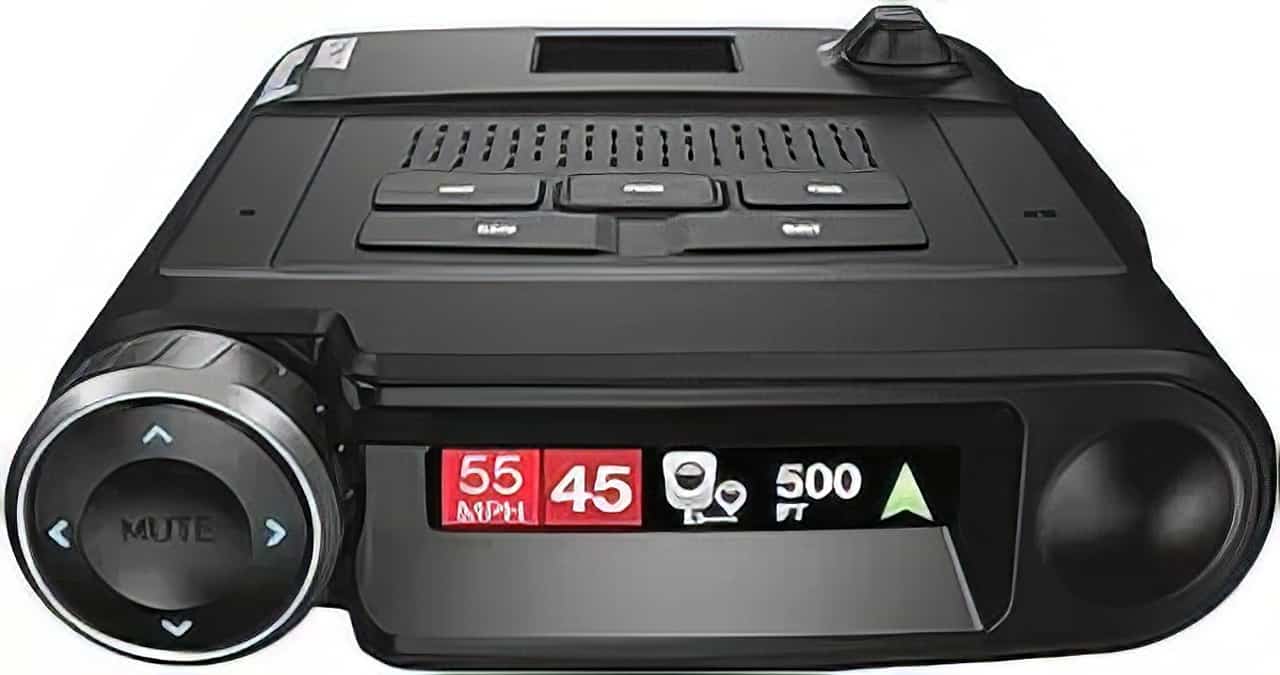
The Escort MAXcam 360c brings the best of both worlds, combining a high-quality dash cam with powerful radar detection. With this gadget in your truck, you’ll never miss what’s happening on the road ahead, while staying ahead of speed traps.
Ready to hit the road with confidence? Keep reading!
Overview and key features (Escort MAXcam 360c)
Escort MAXcam 360c is the jack-of-all-trades in the dash cam world. It packs both radar detection and a dashboard camera into one slick device. Imagine having eyes all around your truck, thanks to dual front and rear cameras giving full 360-degree coverage.
You won’t miss a thing, whether it’s a car zooming up beside you or something happening behind your trailer.
Built-in GPS doesn’t just show where you are; it keeps tabs on your speed too. Pair this with Escort Live, a real-time network that alerts you about speed traps, and driving feels like having a guardian angel on your dashboard.
The display is crystal clear, so every detail pops out at you- from license plates to street signs. And for those who love tech gadgets, advanced driver assistance features make every journey smoother and safer.
“Drive smarter with real-time alerts and full-circle protection.”
Pros & Cons (Escort MAXcam 360c)
Alright, truckers and tech enthusiasts, let’s chat about the Escort MAXcam 360c, a gadget that’s more than just your average dash cam. This little wizard combines video recording and radar detection into one slick package, making your hauls both safer and smarter. Let’s break it down, shall we?
| Pros | Cons |
|---|---|
| Advanced radar detection keeps speeding tickets at bay. Real-time alerts for road hazards make driving safer. Video evidence on tap, in case of accidents or disputes. High-quality video capture, day or night. | Heavier on the wallet compared to basic models. Features might overwhelm tech newbies. Radar detection may not be legal in all areas. |
So, there you have it. The Escort MAXcam 360c isn’t just another gadget to clutter up the dash. It’s a co-pilot that watches out for speed traps and records every mile of your journey. Sure, it might ask more from your budget, and it’s worth checking the radar rules in your area. But for those who like their tech loaded, and their driving recorded, it’s a solid bet. Keep rolling safe and smart, folks!
How Dash Cams are Tested
Experts on the Gear Team put dash cams through their paces. They check resolution, field of view, and clarity in different light conditions. Can you read a license plate at night? They find out.
Installation has to be easy too. The team doesn’t mess around; they want it up and running fast.
They also think about how simple it is to use every day. Does setting it up drive you nuts, or is it a breeze? And they look for those extra perks that make life easier, like wireless internet hookup for quick video sharing or cloud-based storage so you never run out of space.
They keep notes on all this stuff – kind of like your geeky friend who always knows the best gear to buy.
FAQs about Dash Cams for Trucks
Why should I get a dash cam for my truck?
Think of a dash cam as your road buddy who’s always watching your back (and front!). It’s like having an extra set of eyes that never blink, capturing every moment in HD video. Whether it’s a sneaky speed camera trying to catch you off-guard or an unexpected event on the road, your dash cam has got the evidence covered.
What features should I look for in a truck dash cam?
You’ll want something that doesn’t shy away from the dark – so infrared lighting is key. Look for a camera with muscles, meaning it can handle water-resistant challenges and doesn’t freak out when noise levels rise. Oh, and make sure it’s smart enough to connect to wireless internet access; this way, you’re always in the loop.
Can these cams handle my adventurous driving through rough terrains?
Absolutely! These cameras are tougher than a two-dollar steak. They come equipped with G sensors and accelerometers that can take on anything from bumpy roads to those unexpected carwash adventures without breaking a sweat.
How does cloud-connected tech help me as an independent trucker?
Cloud-connected means your precious footage isn’t just stuck on some micro SD card; it’s up there riding high in the cloud! You can access it anytime, which is perfect when you need proof during those “he said, she said” moments or want to relive your scenic drives without digging around for cables.
Do any of these top choices have fancy features like voice controls or AI-powered assistance?
You bet! Imagine cruising down the highway while chatting with Alexa about fleet management strategies or asking her to save clips without lifting a finger off the wheel – now that’s living in 2024!
Will installing one of these top-notch dash cams invade my privacy?
Not at all; think of them more like silent guardians rather than nosy neighbors. They’re there to protect you by capturing what happens on the road, not eavesdrop on your karaoke sessions (though we’re sure they’d be entertained). Plus, you control what gets saved and shared – peace of mind comes standard.
